Why the 4% Rule is Wrong & It’s Hard to Make Time to Exercise
“A one-hour workout is only 4% of your day”
That quote – powerful, right? I admit it, the first time I read that quote it got me. Only four percent? Of my entire day? That’s nothing! What am I wasting all my time on, I should be at the gym two even three hours every day.
While the root of it is technically true, one hour is four percent of 24, it’s not that simple. And it can create unfair feelings of failure and inadequacy for many.
As I often do, allow me to share a reference story to help illustrate the point I’d like to make.
The Corey Mason Meltdown
In her role as the overachieving, pill-popping, adorable Corey Mason in the movie, Empire Records, Liv Tyler famously – or not famously, depending on your familiarity with the movie – said, “My dad always said there are 24 usable hours in every day.”

Making time for this is hard.
We later find out Corey feels enormous pressure from her dad to achieve and do everything. So, usable hours? Sure, if you’re okay with being overscheduled, eating speed like it’s candy, and not sleeping like we discover is happening with Liv’s character.
p.s. eventually she loses her shit and has an epic meltdown from trying to do everything and be everything to everyone.
My point in sharing this little cinematic throwback is to showcase how incorrect the “four percent” quote is and why finding even one hour to work out every day is really tough. It’s also another great opportunity to remind how to prioritize wellness by saying no.
What Happens in 24 Hours
Let’s be real – there are not 24 usable hours in every day. As human beings, there are certain things we need to do – sleep and eat among them.
As citizens contributing to the greater good of this universe, there are other things we need to do – work being at the top of that list. While the rest of it varies from there, here’s a very general example of how quickly those 24 hours are eaten up every day. Everyone is going to need to adjust this to their own lifestyle but it’s a good place to start and illustrate my point.
Subtract 8 hours for sleep – 8 is the holy grail, we all know that. Yet, I know not everyone gets that. So let’s say this 8-hour block also includes time to wind down and get ready for bed, and time to hit the snooze and drag oneself out of bed.
We’re down to 16 hours
Subtract 1 hour for getting ready each day – for some, this is generous; for others, it’s laughably short. Still, seems like a good middle ground.
We’re down to 15 hours.
Subtract 9 hours for work – assuming an average 8-hour workday, plus a lunch hour.
Suddenly, we’re down to 6 hours.
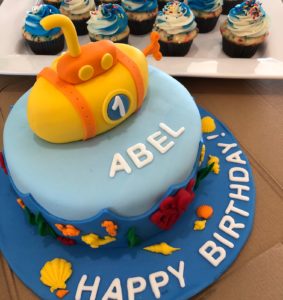
I’ll never be the mom who makes amazing treats – and that’s okay
Subtract 1 hour for driving – to and from work, possibly daycare pickup or drop-off. Similar to the hour for getting ready each day, this hour commute time may be overestimated or hilariously underestimated.
That drops us down to 5 hours
Subtract 1 hour for breakfast and dinner – time to cook, time to eat, and time to clean up.
Now we’re at 4 hours
Finally, subtract one more hour for miscellaneous – if it takes you longer to drive to work, walking to and from places, using the bathroom, or, for many, putting in more than 8 hours per work day.
That puts us at 3 hours
Assuming those averages – and even with the added flex hour, I believe those are still pretty conservative estimates – we’re left with 3 truly usable hours every day.
A one-hour workout becomes 33% of your day, not 4%. Pretty big difference there.
And don’t think I’ve forgotten about kids. It takes plenty of time keeping other human beings alive and cared for every day. For many, that’s the remaining 3 hours right there.
And don’t think I’ve forgotten about the other things in life we need to do for our enjoyment and sanity. Errands, co-worker happy hours, TV time with your spouse, cleaning, reading, calling your dad, a few minutes of relaxation for yourself, and, of course, all the things we say yes to because we “should” do them, whether a committee, PTA event, or other obligation. With or without kids, those remaining 3 hours are easily eaten up, and quickly.

A girls’ trip to run a marathon – prioritizing two things in one!
So, what we’re ultimately left with, looking at those remaining 3 (or likely fewer) hours, is choice and sacrifice.
Say Yes to What Matters
Something’s gotta give to fit in that workout. Most of the time, it’s sleep that’s sacrificed to get up early and work out. Others are willing to sacrifice time to relax and watch TV in the evening, pursue a hobby, or attend an evening networking event. Or choosing to work out vs. spend time with your kids – bring on the #momguilt and #dadguilt.
My point in all this is to remind you that it can be really hard finding time to work out. That’s okay. All the motivational quotes, inspirational memes, and health and fitness “coach” cheerleader posts aren’t the solution and, in fact, may be the opposite of inspirational and leave us feeling like we just suck because we can’t seem to allocate a measly 4% of our day to exercise.
We can’t add more hours to the day, all we can do is try to prioritize and make the best of them. This is where it’s so important to say no and truly spend those precious hours doing what you want to do.
After all, they may not all be “usable” but we all have the same 24 hours in a day. Using them in the way that works best for you is the ultimate goal of wellness.
What do you think about the 4% concept? Where do find most of your time goes?
The comments are all yours so please share.
Connect with me @lindsayinreallife on Instagram or @LindsayIRL on Twitter. Subscribe to Wellness in Real Life so you get every new blog post straight to your inbox.
Tips for Building Healthy Habits: Inclusive Eating
“If you’re not intentionally inclusive, you’re unintentionally exclusive.”
I think we’re officially past the point of talking about New Year’s Resolutions, although, if you made one, I hope it’s still going strong.
Along those same lines, a good resolutions conversation to have this time of year may be about refocusing. Most resolutions fail and it’s not because people are bad and can’t achieve their goals, it’s because of a multitude of reasons.
When it comes to eating, one of the downfalls of resolutions is often that they’re too restrictive. You can’t eat that, only eat this, no sugar, the list goes on.
In time with my next installment of my series about opportunities to build healthy habits, I’d like to make the case for inclusive eating – that means, eating a variety of foods and eating anything and everything you want. That’s right.
Inclusive Eating
There are so many reasons to eat inclusively. Check out my previous blog on the benefits of eating a variety of foods to learn more.

Abel believes in eating all the food. Smart kid.
A few reasons to eat inclusively: nutrition, avoiding bingeing, and a happier relationship with food. And, like any good habit, eating more inclusively takes intention. It’s not enough to just want to do it, there has to be a goal, a plan, and specific ways to achive it.
If you could benefit from expanding your food choices, whether to give yourself a break from being so restrictive, to find something new you love, or to add more nutrition, please read on to learn a few tips for healthy eating.
How to Create Healthy Habits
But first, let’s go back to the foundation of this healthy habits series. Like any habit, the desire and a goal along with it are important. Please don’t go into this with anything less than both.
First ask yourself, why do I want to build this healthy habit? Do I really want to or do I feel like I should? Find that purpose, that desire.
If you really want to, the second step is to set your goal. It’s not enough to say, “I want to build a habit of eating a greater variety of foods.” What does that mean? Does it mean daily or would starting with a new food once a week be enough to get going? A goal gives you something to measure, something to gauge success, and see where adjustments or improvements could be made.
Okay, now that the two basic foundations of healthy habits are there, let’s get on with the eating.
Opportunity #1 – Treat Yo Self
Let’s kick off this eating discussion with one of the keys to any healthy, balanced diet – treats. That’s right, treats.
If this is the one lesson I can hammer into everyone’s heads it’s that no food is bad and it’s okay to indulge in something that’s a “treat” every once in awhile. That could mean once a day, that could mean once a week.
To one person, a brownie might be a treat. To another, bread might be a treat. Everyone’s goals and metabolism and genetics are different so it’s up to you to figure out what foods best fuel your body and which should be enjoyed with the most moderation.

Tis the season for Girl Scout Cookies – one of my favorites ways to #treatyoself
One more time for those in the back – food is not bad. You’re not bad for eating a treat. Use it as fuel and move onto something better next time.
Opportunity #2 – Fruits and Veggies
It’s nearly impossible to deny that fruits and veggies are good for us. They’re full of nutrients and lower in calories than most other foods.
If you’re not currently an avid fruit and veggie eater, take the opportunity to enjoy at least one of each every day. If you’re already a fruit and veggie aficionado, take the opportunity to try one new one a week.
Now there are some eating plans out there that don’t believe in eating fruits or some veggies. Fruit has too much sugar and some veggies are too starchy so they’re basically carbs. Unless you’re on one of these super-restrictive diets for a reason, there’s no reason to avoid fruits or veggies. Pile ‘em on!
Opportunity #3 – Dress Up the Veggies
Okay, the fruits and veggie thing is easier said than done. Especially when it comes to veggies, it can be a struggle to eat them – and, as importantly, enjoy them. Because, while food is fuel, it should also be enjoyed. That’s why you’ll rarely see me eating kale, regardless of how “super” it is (#teamspinach all the way).
In addition to choosing veggies that taste best, there’s another way to enjoy them, rather than suffering through eating something you don’t like but feel like you should eat: dress up veggies with cheese, hummus, ranch dip, something to make them tastier to you.
Opportunity #4 – Hide It
Not limited to just veggies, there are other foods that are healthy but we may not like. Rather than write them off as something that doesn’t make the cut into a regular diet, find a way to hide them in tastier foods.
There are prepackaged foods that incorporate veggies, for example, I buy a brand of pasta that includes a serving of zucchini and lentils. Cauliflower pizza crusts are super-popular now and zucchini bread has been a tasty treat for quite some time. Just a few ideas to get you thinking.
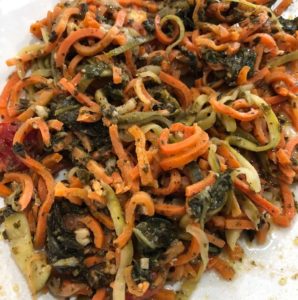
Veggie noodles with flavorful sauce are one of my favorite ways to eat more veggies – zucchini, carrot, the list goes on
One of my favorite ways to disguise food is tough to recreate but it has worked for me – fish tacos. I don’t like meat, fish included, but fish is so good, it’s one of those foods I’m trying to incorporate into my diet. A really good fish taco is a great way to eat fish without tasting it or even realizing it’s in there. Figure out what could be your fish tacos then go for it.
Opportunity #5 – Try Something New
And finally, the whole point of eating inclusively is to try new things, expand beyond the usual.
The last opportunity in this month’s healthy habit focus is to try a new food every week. And new doesn’t have to mean brand-new, it could mean something you haven’t eaten in awhile.
Those following along with the monthly wellness challenges, please share feedback on this one. Additional tips? Opportunities that didn’t work so well? The comments are your space to share thoughts or ask questions so please do so.
In case you missed it, check out January’s healthy habit opportunity: tips to create a gratitude habit.
Connect with me @lindsayinreallife on Instagram or @LindsayIRL on Twitter. Subscribe to Wellness in Real Life so you get every new blog post straight to your inbox.
A Super Bold Idea – Set Super Bold Goals
“You’ll never know what you’re capable of unless you try.”
Ha, get it – super bold, like because it’s Super Bowl time. Oh, sometimes I just can’t help myself.
I’ll cut right to the chase. It’s February, which means many people could use a new burst of motivation, now that the shine and shimmer of the New Year has officially blended into the winter that’ll for sure be here another 6 weeks or so.
Here’s a little something I want to throw out there: When looking at what you want to accomplish or a goal you’d like to set, go bold. Go Super Bold.
What It Means to Be Super Bold
By that, I don’t mean set a goal to lose 50 pounds in a month or to run a marathon next weekend without training.
What I do mean is give yourself permission to go for something that doesn’t seem like you could do it or you thought would be cool but you could never do it…but that you might be able to and you really want to.
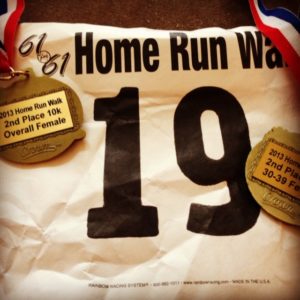
Some Super Bold goals will come up short.
There’s this statistic out there that women, in general, don’t apply for jobs or promotions unless they’re 100% qualified or confident they can do the job. Conversely, men, in general, are much more willing to apply for a job or promotion they’re not qualified for or may be way above their skillset.
The point of this isn’t to pit men against women, so let me stop that right there. This is an example, one of several I could share, that shows many of us (some men, some women) are afraid to go for something if we don’t feel we’ll succeed – or, worse, if we think we’re going to fail.
Super Bold Successes
When I was less than two years into my professional public relations career, I had the opportunity to join a start-up agency – not to write or do media relations, which is what I was learning to do, but as the Director of PR. That meant, in addition to writing and media relations, laying out the PR strategy for clients. Building the entire program. Eventually, managing people.
Essentially, I was being offered a job that I was in no way fully qualified for or mentally ready to take on.
But I did it. And, while I can’t say everything was 100% all the time, I did it well.
Or how about the time me, a former running hater, figured I’d try to qualify for the Boston Marathon – you know, one of the biggest running goals out there. And only after I’d run one sub-4 hour marathon (I’d need under at 3:35 to qualify).
But I did it. And, while I may have failed twice at attempting to qualify and I worked for three years to make it happen, I got that BQ.
Speaking of failures, let’s also talk about Super Bold failures. Because if you set out for greatness, you’ve got to be okay with failure, which is where I think many take the detour away from Super Bold to super safe.
Super Bold Failures
Another risky career move I made in my 20s was taking a job at a super cool start-up company in the obstacle course racing industry. Again, I wasn’t qualified for the job on paper or in real life, but I went for it.

But other Super Bold goals will be successful.
And, while we as a company had some wins and some missteps, ultimately the company failed. I failed along with it. But I learned a lot and I had a really cool experience.
On the heels of the late 20s, my running became really strong, particularly my combo of speed and endurance in the 10k distance. For several races, I set the audacious goal to win them. As in, be the first female across the finish line, regardless of age group.
And, while I did win one, ONE of those 10k races, I came in second or third in about half a dozen others. I probably had no business setting that Super Bold of a goal but, even in those losses, I ran my fastest 10k races ever.
So, next time you think you can’t go for the promotion, ask out THAT girl from the gym, squat more than your bodyweight, whatever it may be that you think you could “never do,” give yourself permission to go for it – to do something Super Bold. And be prepared to work hard and possibly fail in the process.
What’s your biggest or most Super Bold accomplishment to date? What’s your most Super Bold failure and what did you learn from it?
The comments are all about you so please leave one. Connect with me @lindsayinreallife on Instagram or @LindsayIRL on Twitter. Subscribe to Wellness in Real Life so you receive every weekly post straight to your inbox.
Tips to Stay Healthy and Well While Traveling
“Every adventure can have a wellness moment”
This is one of the longer breaks I’ve taken from blogging, I bet since my son was born. I’ve been traveling quite a bit, including over the last two weekends (and I leave for another trip today) so, especially considering weekends are usually my time to write for me, the blog has taken a slight hit.
However, the hiatus gave me some time to think and I recognized all the things I have managed to keep up with amidst all the traveling.
Travel is something many of us deal with, whether for work or pleasure, that can throw off wellness goals.

Chris keep up the cardio.
Here are five ways I stay on track with health and wellness while traveling.
1. Remember the Vitamins
This one is a pretty easy one to keep up, it just requires some pre-planning to pack all my vitamins ahead of time. I take a daily multivitamin, elderberry, and fiber, plus, when I travel, I usually add an extra dose of Vitamin C.
I have this nifty pill pack divider container where I portion out all the vitamins and it’s easy to make sure I’ve taken them every day.
2. Keep Journaling
It’s a simple one but keeping up with journaling is my favorite, easy way to stack on track with traveling. Right now, I keep a daily gratitude journal, a detailed exercise journal, a simple food journal, and also include a short end-of-day check in which covers everything from mood to energy level to something notable from the day.
One way I often need to adjust my journaling is to do it all at night. Normally, I do a lot of my journaling early in the morning but I find it’s tougher to do that when traveling because it’s not my normal mourning routine. Plus, moving it all to the evening is a nice wind-down from the busy day and a good way to reflect on the day.
3. Some Exercise
Second only to eating well, I’d say exercise is a tough one to keep up while traveling.
I go into every trip knowing I won’t be able to keep up with my normal exercise – but I use that to give myself grace but also to take the opportunity to try something new. Maybe I’ll do an easy, quick bodyweight leg circuit in my room in lieu of a normal lift. Or, when I was in Montana the other weekend, the altitude got to me so I had to be okay with slowing my pace a bit.
Another simple idea – walk the halls and stairs at the hotel. My colleague, Jim often winds down the day by going for walks, even if it’s simply around the hotel and stairs.
One final tip: Plan your workout schedule so you build in at least one rest day during travel, that way when you need that day (or two) off, it’s an easy, guilt-free decision.
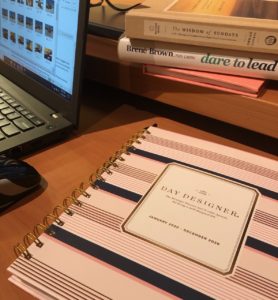
A perfect end to the day – journal therapy
4. Eat Well-ish
This one is without a doubt the toughest to keep up with while traveling. As hard as I try to make the best choices, sometimes there just aren’t great options, especially when you’re with a group and dine out at restaurants for every meal.
One of the ways I try to combat this is set myself up for the day with a good breakfast, nothing excessive and similar to what I eat at home. Then, throughout the day, I don’t strive to eat super healthy…just well-ish, as I call it. Burgers for lunch? I opt for the side salad instead of fries. Ordering dessert for dinner? Hell yes! Often, I’ll just split it with someone else.
I also pack healthy snacks, from fruit cups to protein bars, so that I have good options during the day and later in the evening when I’m back at the hotel (no need to hit the vending machine!).
Especially when I travel for work, we’re often outside, moving around and I get hungrier than normal. So if I eat a little more, it’s okay!
5. Get Some ZZZZs
One of the most important pieces to the wellness puzzle, travel or not, is getting good sleep. Again, this is a tricky one because of earlier mornings and later evenings, and just more activity in general. And, when I’m working, I’m one of those who spends the later evening hours catching up with emails and trying to work on projects I normally would during the day.
But I have a rule: I always cut it off by 9 or 9:30, that way I have a little time to relax and wind down with my journaling or reading, then still get to bed by a reasonable hour. Even when traveling for pleasure, I have no shame in sticking to my early-to-bed/early-to-rise schedule as much as possible.
Travel throws us all off, no doubt. But with a little extra effort and planning, these are a few of the ways I prioritize wellness and try to do my best when I’m not in the comfort of my home routine.
What ways do you stay well while traveling?
The comments are your space to share thoughts so please do so. Or, connect with me @lindsayinreallife on Instagram or @LindsayIRL on Twitter. Subscribe to Wellness in Real Life so you get every new blog post straight to your inbox.
Why to Track Food – For Health, Not Counting Calories
“Food is fuel – fill your tank.”
Food tracking is a common strategy for weight loss. I’ll guess quite a few people out there are currently tracking food, probably counting calories, all in the name of keeping that New Year’s Resolution to lose weight.
But tracking food brings benefits that, while supportive of weight loss if that’s the goal, aren’t about losing weight. And, no matter the goal, food tracking can (and, in my opinion, should) be done without counting calories.
Food Tracking and Counting Calories
The theory behind weight loss is burn more calories than you take in. Simple, right? While the theory is true, the execution is where it’s flawed in real life. Not only is it tough to calculate actual calorie burn (especially exercise machines, those are a ballpark, a best, not an accurate count), it’s even tougher to count calories.

Take it from JoeFitness – counting calories isn’t a good idea.
I could give you my explanation but it’s better coming from a professional. Check out this video from my pal and the best authority on everything health and fitness related, JoeFitness. Joe explains why counting calories is a terrible idea and flawed process.
Let me say one thing quickly: no judgment if you track calories or have before. It makes sense in theory, if you’re trying to lose or maintain weight. However, now that we understand why it’s a bad idea to count calories and try to balance out with inaccurate estimates of calorie burn, let’s talk about the true value behind tracking food: fueling the body to feel and function its best.
Food is Fuel
In case I haven’t said it enough before, food is fuel. Food is good for us. Food is not bad, food choices shouldn’t incite guilt, and consuming food is not a punishable offense by cardio and burpees to “burn it off.”
Keeping in mind this positive association with food, it’s just as crucial to realize what too much or the wrong foods for you can do.
I believe that healthy food isn’t black and white. What’s healthy for me may not be for you and vice versa. Healthy foods are what makes each person happy and functioning at their best.
Tracking food helps to ensure the foods you’re eating are providing adequate fuel, nutrition, and making you feel your best. Conversely, tracking food can be a great strategy for those feeling sluggish and looking to boost energy for workouts, raising kids, getting through classes – pretty much living life.
Why to Track Food
I’ll admit it – I’ve tracked calories before. However, I didn’t do so to lose weight (again, no judgment if you have, it makes sense in theory).
When I was training to quality for Boston Marathon, I tracked calories, carbs, protein, sugar, all of it, to help ensure I was getting enough to eat, as well as identify patterns of what made me feel great for a run and when I didn’t feel my best.

Food is fuel – sometimes, that fuel comes in the form of ice cream
Still today, I track my food, though I do it fairly casually. No numbers, no specifics, but I like to keep track for similar reasons as I did when training for a Boston qualifier. Tracking food ensures I’m getting enough to fuel my body for its needs, along with helping me realize if certain foods are getting in the way of feeling my best. So there’s plenty of value to tracking food even if weight loss isn’t a goal.
Don’t Count Calories to Lose Weight
For those who are looking to lose weight, there’s still benefit to that goal that comes from tracking food – without tracking calories.
Tracking food makes a person aware of how often and what they’re eating. This can help identify patterns (hmmm…when I don’t eat a quality breakfast, I’m hungry by 9:30 and the donuts in the breakroom sure look good…) as well as makes eating more mindful. There’s something about writing it down that makes you stop to think, “Am I really hungry? Or am I eating this for another reason.”
Of course there are reasons to eat when you’re not really hungry – and that’s okay. Even though you might not be hungry, but something sounds really good, that doesn’t mean it’s bad to eat it. Enjoy it! The exercise of mindfulness is beneficial and may help diminish a craving next time.
For the record, when hungry, eat. Weight loss be damned, if you’re really, truly hungry, your body’s signaling you should eat. Also, life’s too short to be hangry.
What do you think about tracking food without counting calories?
The comments are your space to share thoughts so please do so. Or, connect with me @lindsayinreallife on Instagram or @LindsayIRL on Twitter. Subscribe to Wellness in Real Life so you get every new blog post straight to your inbox.
Tips for Building Healthy Habits: How to Practice Gratitude
“Every day may not be good. But there’s something good in every day.”
Raise your hand if you’ve ever made a New Year’s Resolution. Keep it up if you stuck with that resolution…forever.
January is all about resolutions but, unfortunately, most New Year’s Resolutions fail within the first few weeks. There are all kinds of reasons resolutions tend to fail but that’s not why I’m here.
Rather than talk about New Year’s Resolutions, let’s focus on something that has a great chance of success: creating healthy habits.
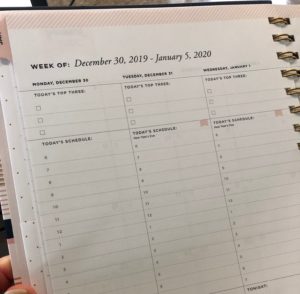
A new year means a new journal to track healthy habits.
This year on the blog, I’m introducing a monthly series of opportunities to create healthy habits. These are not monthly challenges, 30-day challenges, or weekly challenges – they’re not challenges.
Anyone can take on a challenge for a few days or weeks and complete it…but, then what? I believe that’s a problem with typical challenges. Sure, the work put in is great but then the challenge is done, and things go back to normal.
What I’m here to do is offer opportunities. Unlike challenges people try to conquer, opportunities are meant to be seized. They’re chances to do something you really want to do. If that includes building healthy habits, that last long after the first days, weeks, or months, then you’ll want to join in.
Opportunities to Create Healthy Habits
There’s no secret formula for how to create healthy habits. Like anything that’s important to us in life, they’ll be prioritized and continued. However, a few basics are needed to get started.
First, there has to be a want, a real desire. If you don’t really want to do something, it’s going to lose its luster, be deprioritized, and fade away. Choose to build healthy habits around things you really want.
Second, there has to be a goal. More on that later.
I’m excited to share my first installment of this series, aimed, not at offering up another tired 30-day challenge or month challenge, rather a helpful set of tips that can be used to create a healthy habit – one that sticks.

Grateful for running.
And I’m especially excited to start with one that’s super easy and so impactful – yet I’m not sure many people actually do this: practice gratitude.
Practicing Gratitude
One of the habits I worked hard to create in 2019 was creating a habit of gratitude. It started as a weekly journal entry, then progressed from there and, today, is part of my daily morning mindfulness routine, as well as a daily journal entry.
And I swear it has made me happier, and more focused and calm, in addition to helping me better prioritize my life and time.
If you could benefit from building a gratitude habit, please read on for three tips that will help build the habit.
How to Create Healthy Habits
But first, back to the foundation. Like any habit, the desire and a goal along with it are important. Please don’t go into this with anything less than both.
First ask yourself, why do I want to build this healthy habit? Do I really want to or do I feel like I should? Find that purpose, that desire.
If you really want to, the second step is to set your goal. It’s not enough to say, “I want to build a habit of gratitude.” What does that mean? Does it mean daily or would starting with a weekly practice be enough to get going? A goal gives you something to measure, something to gauge success, and see where adjustments or improvements could be made.
Okay, now that the two basic foundations of healthy habits are there, let’s get on with the gratitude.
Tip #1 – Pick the Right Time
Morning, noon, Monday or Friday,– there are 24 hours in the day and 7 days in the week, and, with that, countless opportunities to practice gratitude. However, I believe an important part of making any habit stick is fitting it in when it works best for you.
For example, when I started my weekly, morning gratitude habit, it went well. Then I decided I wanted to expand it to a daily, morning gratitude habit. Success! Then, I attempted to expand it by adding another session of journaling, this time at the end of the day. That one didn’t stick.
Why? I have a morning routine and mornings are my best time for writing. Conversely, I don’t have a nighttime routine and nighttime isn’t my best time for writing. I’ve stuck with my gratitude habit by focusing time when I know it works best for me – in the morning.
Tip #2 – Figure Out the Way
You can speak it. You can write it. You can tweet it. However you choose to express your gratitude, do it in the way that is most appealing to you – if it’s natural, it’s more likely to stick as a habit vs. forcing something that’s not intuitive.

With great friends like this, it’s easy to find gratitude.
For example, when I started my gratitude habit, I set out to tweet it – a daily gratitude tweet. I figured it would it be good for me and maybe someone else would see it and get a good feeling. That one didn’t stick.
Why? I’m not a phone person. I’m not really even a social media person, unless I’m doing something intentionally on a platform. I chose to focus on what I am – a writer. I love to write so keeping a gratitude journal is something I do every day, with enjoyment.
Tip #3 – Decide What the Habit Looks Like
Now that the timing and the method is nailed down, what does an actual gratitude practice look like? It can be anything! But for those who need a starting point, here are a few ideas for how to express gratitude – first, the easily repeatable methods, what I call ‘Static Gratitude’ that are especially good options for those looking to develop a consistent daily or weekly habit.
Static Gratitude
1. Choose something you’re grateful for that can be summed up in a single word or phrase, whether written, silent thought, spoken, even illustrated:
-Coffee or Starbucks coffee
2. Create a daily mantra that changes; whether a written statement, silent thought, or spoken phrase:
-Today, I am grateful for ______/ to be_______ / because ______
3. Share it with a friend or family member; via a phone call, in-person, social message, etc.:
-A text could be: Thank you, Jenny, for inviting me to bootcamp class last week. I’m grateful for our friendship and shared love of fitness!
Finally, there’s the option of what I call, ‘Spontaneous Gratitude.’ While this is one that can’t necessarily be planned, it can be done consistently daily or weekly. Spontaneous gratitude is still a wonderful practice, it’s about being mindful, building awareness of situations to recognize it, then committing to fulfill it.
4. Share it with a stranger; make a point to show gratitude to someone you don’t even know:
-My colleague, Jim, does a wonderful job of recognizing and thanking people when we’re at restaurants, the airport, wherever – his simple, “Thank you for the work you’re doing, I appreciate it,” comment always leaves that person smiling.
5. Instead of complaining, find a positive:
-When I have a tough day at work, I recognize it (because it’s okay to be upset! Gratitude doesn’t mean you’re not still allowed to be sad, pissed, or frustrated) but rather than complain, I remember that I get to write and tell stories for a living. I get to do what I love, every day. If I wanted an easy, stress-free job, I’m sure I could find one. But I chose this one and am grateful it’s what I get to do – boom, gratitude realized.
If you’re following along and ready to create a gratitude habit, please let me know if this post helped – or, please share it on social media if you believe it will help others build a healthy habit of gratitude.
And of course, the comments are your space to share thoughts so please do so.
Connect with me @lindsayinreallife on Instagram or @LindsayIRL on Twitter. Subscribe to Wellness in Real Life so you get every new blog post straight to your inbox.
Beyond Healthy Holiday Eating – How to Eat Well All Year Long
“Happy New Year!”
Welcome to 2020! Not just a new year, it’s a new decade. The 2010 decade was a pretty solid one for me, mostly the latter half.
I met my husband, finally ran a Boston qualifier, got a great new job, ran the Boston Marathon, got married, ran the Chicago Marathon while I was pregnant, had my son, and ran Grandma’s Marathon in Duluth with one of my longest besties.
While a lot of my top memories involve running, I think the best part of the 2010s was personal growth – becoming wiser, prioritizing better, practicing mindfulness and gratitude, and, mostly, learning to step back and focus on what matters most.

Abel fears no food.
What’s your biggest takeaway, accomplishment, or learning from the 2010 decade?
Eat Well All Year Long
Shifting to another topic, the real topic I’m here to share today, is all about another great year and, hopefully, awesome decade in the 20s. And it starts with something simple and huge.
Throughout the past several weeks, you’ve possibly sought out or been exposed to articles with tips on holiday eating.
How to eat well during the holidays.
How to not overeat during the holidays.
How to stick to healthy eating goals during the holidays.
Those types of holiday eating tips.
The reality is it’s tough to eat well during the holidays, right?
Thanksgiving food is delicious. There are always treats around the office. And, if you’re like me, it’s not just one Christmas dinner. It’s Christmas Eve with the in-laws. It’s the weekend before with my other set of parents. It’s the leftovers after.
I firmly believe it’s okay to indulge and we should be free to eat and enjoy without fear. After all, a couple days of overeating aren’t what can destroy our health. It’s the other 300-plus days throughout the year that simple eating habits can have a positive effect on wellness.
Now that the holidays are over shouldn’t mean the interest in healthy eating ends – so, here are 5 holiday-inspired tips for eating well the rest of the year.
Do What’s Healthy for You
Keep in mind that “healthy” food is a subjective term – what’s healthy for me may not be for you. However, there are foods that make each of us feel and live our best. Those are the foods that are healthy.
1. Exercise
There’s something about exercise that encourages quality food choices that fuel the body. After all, food is fuel. Whether morning sweat sesh, lunch workout, or evening exercise, creating a daily habit of moving the body is a great way to eat well.

The important things in life – waffles & friends.
One note to this I must add: exercise because it makes you feel good, NOT because you need to burn off foods, cancel out bad foods, or punish yourself for eating. Food is not bad and exercise is not punishment.
2. Water
There’s no downside to drinking a lot of water. I’s free and easy, and it helps the body stay in tune with natural hunger cues, as well as cleansed, naturally – no detox diets needed.
3. Snack
It may seem counterproductive that eating more helps with eating better, but good snack habits are a great way to keep from getting too hungry and overeating – and it’s the best way to avoid the dreaded hangry.
4. Mindfulness
Doing things intentionally, eating included, is a powerful piece in the making-good-choices-puzzle.
Mindless eating is one of the biggest causes of overeating and empty eating (no shame, who among us hasn’t polished off an entire box of Cheez-Its…just me?). Keeping food choices intentional to what’s going to fuel the body and make it feel its best is the center of healthy, positive food association.
5. Variety
No food should be off-limits. Give yourself permission to eat all the foods. A little bit of everything feels like you’re getting it all, no deprivation-induced-binges, plus encourages a good variety of nutrients, provided there’s a solid mix of veggies, proteins, fats, carbs, and everything.
Here’s to healthy, positive, and happy eating habits in 2020.
Do you have any other tips to encourage good food choices?
The comments are all about you so please leave one. Connect with me @lindsayinreallife on Instagram or @LindsayIRL on Twitter. Subscribe to Wellness in Real Life so you receive every weekly post straight to your inbox.
New Ways to Be Well in 2020 and All Year Long
“Challenge accepted.”
I’m not a fan of challenges.

Ready for a challenge? I promise they won’t all be running.
Hold on, that’s not quite right.
I mean, I love a good challenge at work,
I seek out opportunities to challenge myself to run marathons.
Most of all, I’m the parent of an almost-two-year-old.
Yes, I’m down for challenges.
What I meant was, I don’t do organized challenges, like weight loss challenges, 21-day (fill in the blank) challenges, those types of things. Just not my thing.
However, after the wonderful reception my 30 Days, 30 Ways to Be Well blog received, I started thinking about how to take that one further – yet, not create typical month-long or 30-day challenges that Beach Body coaches or workplaces do.
What I decided I’m going to do is a new challenge each month next year, with a twist – they’re not meant to be weight loss or workout challenges, but instead, ways to build those solid, healthy habits that make us feel our best. They’ll be no longer than a week, some will be simple, some will have more to them. And all will be designed for overall health, happiness, and wellness, and based on my simple, easy ways to be well.
I do have several of them mapped out already but if there are any specific areas you’d like to see, please let me know.
The comments are all about you so please leave one with your request or simply if you’re excited to follow along. You can always connect with me @lindsayinreallife on Instagram or @LindsayIRL on Twitter, too, and please follow me if you’re not already, I’ll be sharing more challenge-related stuff there with each one. Finally, subscribe to Wellness in Real Life so you receive every weekly post straight to your inbox.
What Are You Willing to Sacrifice to Achieve a New Year’s Resolution?
“The most important decision about your goals is not what you’re willing to do to achieve them, but what you’re willing to give up.”
This time of year, it’s all about the 12 days of Christmas. Content is no different, everyone’s creating blogs around the 12 days of Christmas. I know, I’ve done it myself. Anyone remember the 12 days of Fitmas?
This year, I’m changing it up and tying it into my annual New Year’s Resolutions blog.
Instead of focusing on the 12 Days of Christmas, I’d like to shift focus to an important timeframe in the resolution-making process. Or, at least, what can be an important time: the six days between Christmas and the New Year.
Focusing New Year’s Goals
These are the last days of the year. While not enough time to make any big changes to achieve those 2019 goals set earlier in the year, there is one big mindset shift that can be made to help further new goals in 2020 and beyond.

I will never sacrifice waffles – which is why I’ll never set a goal to be a bodybuilder.
Forget the fact I don’t believe in New Year’s Resolutions and why they fail. Instead, I’ll embrace it – if this happens to be the time of year someone feels energized to set a goal and work to achieve it, I’m all in on that.
That’s where I’m going to focus this post and encourage resolution-ers to focus the next six days – the work to achieve a goal. But not so much what a person is willing to do, but what they’re willing NOT to do.
Tradeoffs and Sacrifice
One of the hidden sides of success isn’t the planning and hard work that goes into it. I think we’re all aware of that by now.
The piece that doesn’t get talked about enough is the reality behind the hard work. It’s often not what we do but what we don’t do that ultimately makes or breaks a goal. It’s what you’re willing to give up, sacrifice, or trade off to achieve a goal.
I’ll share an example. Every year for the past decade (with the exception of the year I gave birth), I’ve run a marathon. I believe, what everyone sees, knows, and understands about that goal is all the stuff that goes into achieving it.
Everyone knows I have a training plan. Everyone knows I go running often. Everyone knows I do yoga. Maybe even people know I strategically plan rest days.
What I believe isn’t seen, known, and understood is all the stuff I DON’T do that helps me achieve that goal. I don’t sleep past 5:30 most days. I don’t slack on weights. I don’t go out for happy hours or Friday nights. I don’t skip workouts (unless I’m very sick or there’s an emergency with my child).
In order to achieve something, tradeoffs are part of the deal.

Sleeping in – one thing I’m willing to give up, even on Saturdays.
Goal to drink more water? It’s likely that giving up some soda, coffee, or other beverage will go along with it.
Goal to work out every weekday? Either sleeping later or a free evening time will have to go.
Goal to meal prep lunch every day? You’ll have to give up restaurant lunches and the choice of what you’re going to eat that day.
Goal to save money? Perhaps you’re willing to give up that morning Starbucks, or make a larger, one-time tradeoff, like take a shorter, more modest vacation vs. a long, lavish one?
Achieve a New Year’s Resolution This Year
When setting a New Year’s Resolution this time, take more time to really think about it. Be realistic with yourself – what you’re willing to give up and what you’re not.
You have a certain number of hours every day, a set of existing habits, other daily lifestyle choices, most of which are engrained. What is realistic to change?
Having a New Year’s Resolution and all kinds of energy to achieve it today doesn’t add more hours to your day or magically break habits or lifestyle choices, so you have to figure out the tradeoffs you’re going to make so it can happen.
I wish you luck in your 2020 endeavors! Are you making a New Year’s Resolution now? What’s your goal for 2020?
The comments are your space to share thoughts so please do so. Or, connect with me @lindsayinreallife on Instagram or @LindsayIRL on Twitter. Subscribe to Wellness in Real Life so you get every new blog post straight to your inbox.
Instead of Fighting, Let’s Learn a Few Lessons from Peloton’s Controversial Holiday Commercial
“Keep you coming back for more”
This damn holiday Peloton commercial. I don’t want to talk about it because I’m sick of it, but I also feel there’s a side to it that hasn’t been properly addressed that needs to be.
If you haven’t seen it…I don’t think that’s even possible. It’s on all the time. It’s all over the internet. It’s brought more exposure to Peloton and the actress in the commercial, Monica Ruiz, than either probably imagined.
I’m not here to argue about the quality or message of this commercial, especially at this point. The topic has been hashed and rehashed enough. From what I’ve seen, I believe 95% of people are fine with, even supportive of it, it’s the remaining 5% who are offended by it.
And all the chatter is not because the outraged 5% are louder. It’s because, for as many people who believe the commercial is offensive, for promoting everything “a controlling husband” to “a skinny woman who doesn’t need to work out,” there are five times as many people who are defending it.
That’s where the real noise is coming from this debate – people trying to bring the haters back to reality and share the positivity of the message, the reality of fitness and wellness.

Thick thighs. A belly. Big butt. Say it with me – thin doesn’t equal healthy.
And that’s what I want to talk about, the message that’s trying to shine through the dark clouds. Actually, there are two messages that really stand out to me because I believe they’re still widely-held misconceptions about wellness, plus one additional lesson that applies beyond wellness.
So here’s what we can learn from Peloton, in general, and the controversial Peloton Christmas commercial.
Lesson #1
Thin does not equal healthy.
Let me repeat that for those in the back who didn’t hear it: Just because a person is thin, does not mean they are healthy.
Part of the outrage over this commercial is that the actress (remember, people, she’s an actress. It’s a commercial. This isn’t real life) is thin. So, the critics believe that this could be a harmful message…because, in the minds of those who don’t get it, people only work out to lose weight.
A thin person may not be healthy; flip side, a “not-thin” person may be extremely healthy. In case I haven’t said it enough or there’s more to this topic one needs to read to understand, here’s another example, highlighting the fit, healthy bodies of professional athletes.
There’s really no further explanation needed to this key lesson everyone can take away – but, just in case it’s still not clear, I’ll use a different word to make sure everyone understands: skinny does not equal healthy.
Okay then, moving on.
Lesson #2
Fitness is not the only aspect to wellness.
I think this is the bigger takeaway here. Sure, fitness is probably the first thing most of us think about when we think of wellness. But there’s so much more to having a fit lifestyle that translates to overall wellness.
Building on the outrage of lesson #1, there’s so much more to working out than weight management. The story I believe Peloton was trying to portray with the commercial is a person who gained confidence, perhaps cardiovascular health, maybe even stress management, by adding exercise to her life.
So let’s explore some of the other aspects of wellness that come from exercise that have nothing to do with weight loss – because, in case you forgot, a thin person is not always a healthy person. Making sure that’s clear. Just in case, here’s another example, using Nike’s plus-size mannequin to illustrate the point.
First, and most importantly, stress management. Holy shit are we, Americans in general, stressed. People have all sorts of unhealthy ways they deal with stress like un-mindful (I may have just invented that word) overeating, smoking, drinking too much alcohol and sugary caffeinated beverages, and taking copious amounts of medication.
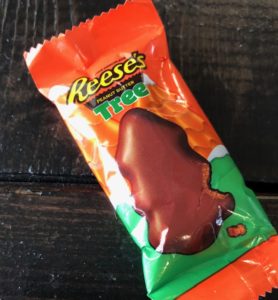
Food is fuel – and sometimes, that fuel is chocolate and peanut butter.
Exercise, I believe, is the best medicine. It honestly changes the makeup of the brain, happiness, focus, perspective, all of it, and encourages a strong work ethic in other areas of life.
Second, putting better things in our bodies. As mentioned, people aren’t always putting the best stuff in their bodies. From sugary, caffeinated drinks to foods with no nutritional value, many are missing out big time on the benefits of drinking water and eating veggies.
That’s not to say eating candy and ice cream and having coffee are bad. Quite the opposite, actually – there are no “bad” foods that should never be consumed. There are, however, food and beverage choices that are best for each individual. For me, it’s water, veggies, and Reese’s. Damn if I don’t love Reese’s.
It’s something different for everyone. The point is, exercise tends to encourage options that make us feel our best, the options that fuel our bodies, make us feel energized, and avoid the feelings of sluggishness.
Third, sleep – there’s a lot of sleep deprivation going on and I’m not just talking about new parents (high-fives to you, you’re dong a great job!). Exercise encourages better sleep. Simple.
These are just three examples of positives that come from exercise and have nothing to do with weight loss. Because, in case there’s any confusion out there, a thin body doesn’t equal a healthy body.
Seriously, I can’t undervalue the benefits of steady, consistent, committed exercise and I think it’s why it’s the one topic on which I have and always will take a strong stance.

Exercise gives you endorphins. Endorphins make you happy!
You don’t have to do it, at the end of the day it’s none of my business if you choose not to – but I can’t say enough good things about it. And, again, it’s about so much more than body shape and losing a few pounds…because I’m not sure if that’s clear to everyone.
Lesson #3
Hard Work and Commitment Are Important
The concepts of hard work, discipline, taking responsibility, and committing to oneself seem to be lacking in our world today. Not everyone, mind you – high-fives to everyone who shows up and works hard.
In general, there’s more focus and interest in shortcuts or taking credit without the work or blaming others. Lose 30 pounds in one month with no exercise! Run a marathon without training! Read this book and you’ll finally be happy! No.
Wellness, and life in general, is not easy. There are no quick fixes, no shortcuts, and it’s no one’s fault or responsibility other than yours. Wellness requires a long-term commitment, discipline, and showing up to work hard every day.
One of the gripes of the Peloton commercial is that the wife shows her husband the year-long vlog she kept about her experience. What I think this shows, and what people missed, is that she committed. She worked hard. She showed up. Even if it meant early in the morning or dashing home straight from work. She made sacrifices and she did it.
And the other piece? She was proud of it. And she should be.
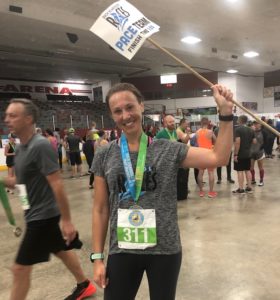
Work hard. Show up. Be proud.
Wellness is work. It’s commitment. It’s maybe falling off track for a week or a month, but getting back to it. It’s hard work and it’s commitment, and it’s great to be proud of the accomplishments.
Changing Perceptions
I get why there’s negative sentiment around the Peloton commercial. Part of it is the world we live in today and the free, easy access to share opinions online, but a big part of it is the lack of education and understanding of the topic of wellness and these three broadly-held misconceptions:
That fitness is the only piece of wellness
That being thin equals being healthy
That worthwhile things should come easy
If nothing else, I hope the controversial Peloton commercial can help bring light to these misconceptions and help change perceptions for the better. Especially as New Year’s approaches and wellness goals are set, please keep in mind that there’s so much more to wellness than size and weight. And remember that goals take work and commitment.
At the end of the day, Peloton’s mission is to sell exercise equipment and, even more than that, offer a lifestyle of goal setting, fitness, and wellness. One of its key messages, according to its website, is to create an experience that keeps you coming back for more.
Cheers to you, Peloton. Here’s one positive vote for what you’re selling.
Did the Peloton Christmas commercial outrage you or did you see it for what it was meant to be? Has it brought up any other wellness thoughts for you?
The comments are all about you so please leave one. Connect with me @lindsayinreallife on Instagram or @LindsayIRL on Twitter. Subscribe to Wellness in Real Life so you receive every weekly post straight to your inbox.
